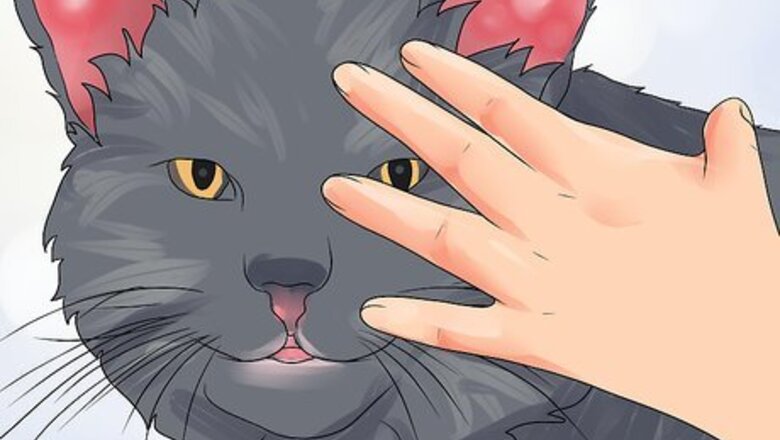
views
Identifying and Understanding Ear Haematomas
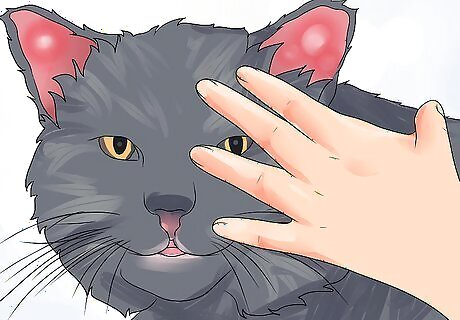
Recognize swelling or tenderness as a potential sign of ear haematoma. A cat’s pricked (upright) ear is usually normally no more than 3–4 inches (76–102 mm) thick, and is shaped like a gentle concave cone. A newly formed ear haematoma looks like a large blood blister. The ear flap may be tender to the touch, and feel warm or hot. Applying pressure to the ear flap can create the impression of fluid beneath your fingertips.
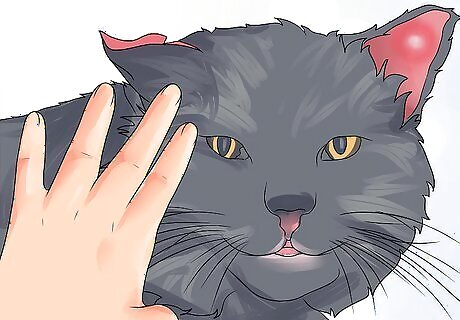
Watch out for "cauliflower ear.” An untreated haematoma that has been present for 5-7 days will cause the ear flap to look thickened, wrinkled, and shrunken. This happens because the body has started to reabsorb serum (the fluid that remains once the blood has clotted). There is also a chance that the contracted ear has shrivelled down and blocked the entrance to the ear canal, which can reduce air circulation and cause ear infections.
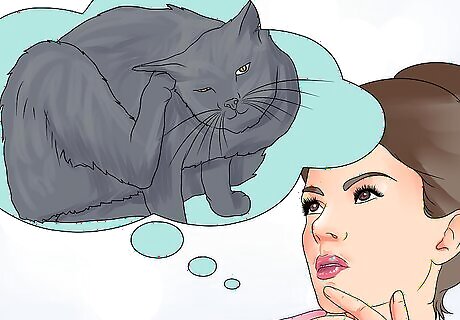
Learn what causes an ear haematoma. A cat's ear is supported by an inner core of stiff cartilage that is lined on either side by skin. Small blood vessels nourish the skin and attach it to the cartilage. When the cat scratches at its ears, the scratching may cause the skin to shear away from the cartilage, rupturing the blood vessels and causing the blood to seep into the space between the skin and cartilage. This rupture causes a hematoma. The bleeding is usually self-limiting, and stops once pressure builds up in the haematoma, which compresses the small vessels and stops them bleeding.
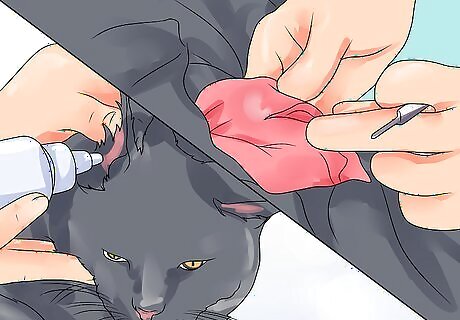
Consider the options for treating an ear haematoma. There are two methods of treating an ear haematoma: surgery and medical management. Surgery provides a guaranteed outcome but involves a general anesthetic and requires the cat to wear a buster collar (also known as an e-collar) for 2-3 weeks. Medical management only has a 50% success rate, but can be repeated if it's unsuccessful the first time. Surgery is the more expensive option, but if the medical therapy needs to be repeated, costs can add up.
Correcting a Haematoma through Surgery
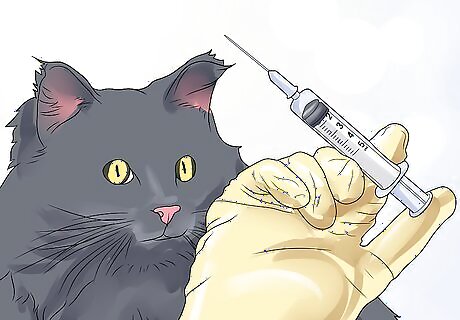
Prepare your cat for anesthesia and surgery. Because surgical correction involves general anesthesia, make sure your cat fasts overnight prior to the anesthetic. Once admitted to the clinic your cat will be given a pre-med injection which provides pain relief and sedates it. After about 20 minutes, once the sedation has taken effect, the vet will administer a general anesthetic and clip the fur from your cat’s ear flap.
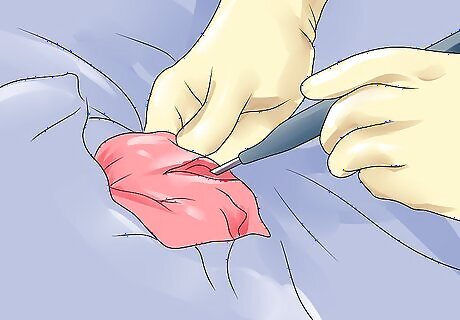
Understand how the procedure is performed. Surgery is performed under sterile conditions. The aim of the operation is to cut a 2–3 centimeter (0.8–1.2 in) incision on the inside of the ear flap and allow the blood to drain out. The vet will then flush the empty pocket between the skin and the cartilage to remove blood clots and compress the skin against the cartilage to prevent the haematoma from recurring.
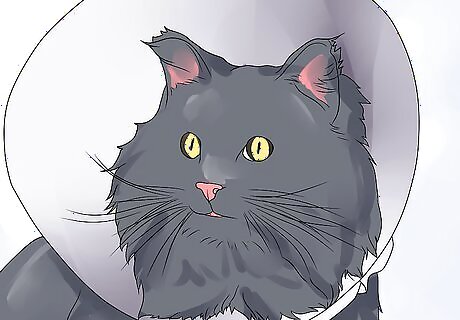
Put a buster collar (or e-collar) on your cat following the surgery. This will prevent the cat from scratching at the sutures. If your cat got a claw in the suture, it would hurt itself and could potentially tear its own ear out.
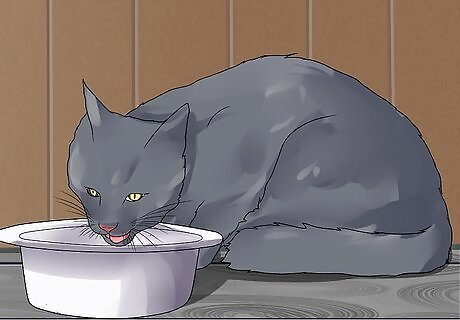
Feed your cat bland food following the procedure. Chicken or white fish the evening after an anesthetic can help combat nausea. Don’t be alarmed if your cat is sleepy for 24 hours after an anesthetic. Following surgery, it’s best to keep your cat indoors in a warm environment.
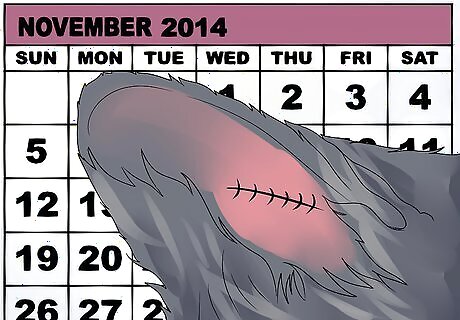
Leave the sutures in place for 2-3 weeks. During this time, scar tissue will form and help bond the skin back to the cartilage. Schedule an appointment to take your cat back to the clinic and have the sutures removed. Once the sutures are removed, your cat can resume its usual lifestyle.
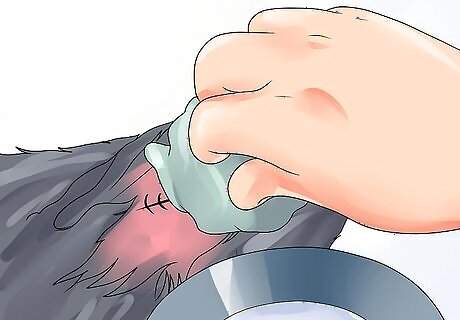
Keep the suture site free of infection. Your vet may suggest you gently wipe the incision site with salt water (a teaspoon of salt to a pint of previously boiled and cooled water) once a day. This can help to clean away any ooze from the incision and reduce the amount of bacteria on the skin surface, which in turn may reduce the risk of infection.
Clearing a Haematoma through Medical Treatment
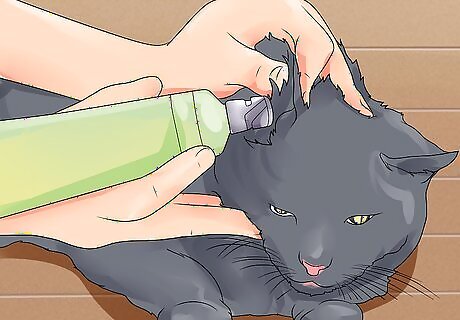
Allow the vet to drain the haematoma. Medical treatment involves aspirating (sucking out) blood from the haematoma and replacing some of the fluid with an injectable steroid. This works best with a cat that has a placid disposition. The vet will apply local anesthetic cream (eg EMLA) to the ear prior to inserting the needle. If the cat does not tolerate a needle being inserted into the haematoma, then sedation may be necessary. If this is the case, then it is worth re-assessing the surgical option, since sedation increases cost and lessens one of the attractive advantages of medical therapy.
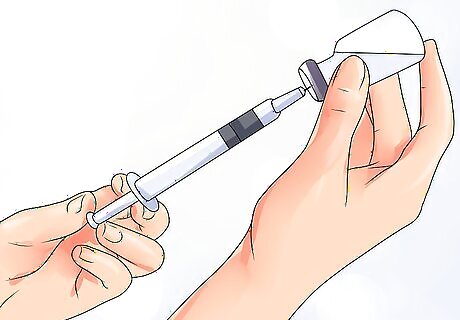
Understand how the aspiration is performed. A vet tech will restrain your cat in a sitting position and disinfect its ear. Then the vet assemble a sterile syringe and introduce it to the most swollen part of the ear. The vet will then use suction to aspirate as much of the blood as possible. Once satisfied that all the blood has been aspirated, the vet will detach the syringe and attach a separate syringe containing a steroid, which the vet will drip into the pocket.
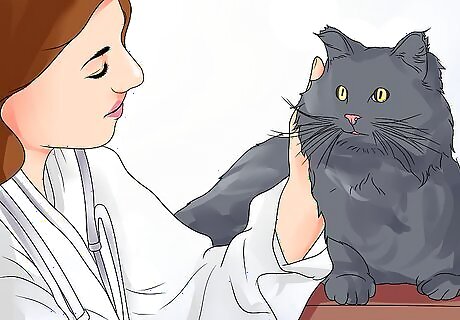
Bring the cat back to the vet for a follow-up. The cat does not need to wear a collar and can go about its daily routine undisturbed. No specific post-procedure care is needed. Bring your cat to the clinic for a checkup after 7 days. Around 50% of ear haematomas treated in this manner refill. If your cat’s ear haematoma refills, you then have to decide whether to repeat the process, opt for surgery, or leave the haematoma to contract into a cauliflower ear.
Preventing Haematomas
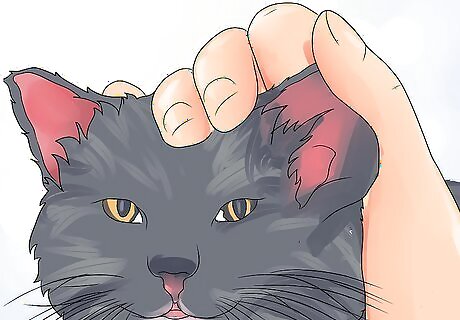
Regularly check your cat's ears for signs of infection. Ear haematomas usually result from scratching or head-shaking. Common causes of this are ear infections or parasites such as fleas or ear mites. You can decrease the risk of haematoma formation by regularly checking your cat's ears for signs of infection. These include a bad smell from the ears, skin redness when compared to the other ear, or discharge from the ear. Ear discharge may consist of thick, black-brown wax (often associated with ear mites or yeast infections) or a yellow-cream purulent material (which indicates a bacterial infection.) Either should prompt a visit to your veterinarian for treatment.
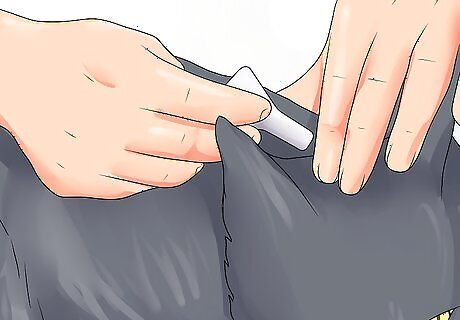
Practice parasite control. Regular parasite control with effective insecticides is a recommended precaution against haematomas. Those products from the ivermectin family, such as Revolution (US) containing selamectin, have the bonus of not only treating fleas but killing ear mites. This product is designed to be applied to the back of the neck, once a month, every month. Head shaking is most commonly the result of the irritation associated with ear mite infection, and regular application of a selamectin product should kill ear mites that are present and prevent re-infection.




















Comments
0 comment